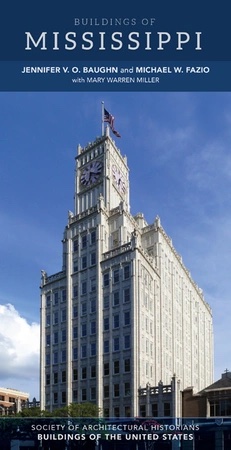
In 1908, a group of Jewish community leaders presided over by Israel Marks formed the City Park Association, bought land northwest of downtown, and set out to transform it into a city park. The Meridian Railway and Light Company extended streetcar service to the area, and a designer identified locally only as “architect Shaw” developed paved paths, sundry structures, and water features, including a large lagoon with an adjacent greenhouse (demolished 1970s) and an alligator pond with a bridge and low monoliths made of rubble stone. A concrete promenade now begins east of the Dentzel Carousel (EM24.1) and leads south to a circular gazebo, then to an octagonal bandstand. Along the way, pairs of streetlamps originally carried illuminated metal arches. The gazebo has a ring of cast-iron columns with Ionic capitals, a low metal ribbed dome, and an iron finial. It retains its mosaic-tile floor and originally was illuminated. To the east a dance platform was replaced in the 1930s by a swimming pool with a field-stone pool house. The bandstand has a fieldstone base and wooden columns with brackets supporting a tent roof. West of it, Shaw placed a semipentagonal picnic shelter with a wooden roof on fieldstone piers. Much farther south, he laid out bridle paths and located an open-air terraced theater. Highland Park opened in 1909, and work was completed by 1913, at which time a bronze statue of Israel Marks was positioned south of the carousel shelter. The adjacent Jimmie Rodgers Museum honors the Meridian-born country music legend.

